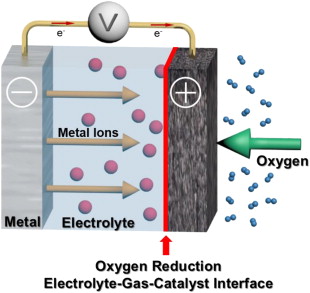Commercial and research battery technologies for electrical energy storage applications
- Journal
- Progress in Energy and Combustion Science
- Vol
- 48
- Page
- 84-101
- Year
- 2015
Developing green energy solutions has become crucial to society. However, to develop a clean and renewable energy system, significant developments must be made, not only in energy conversion technologies (such as solar panels and wind turbines) but also regarding the feasibility and capabilities of stationary electrical energy storage (EES) systems. Many types of EES systems have been considered such as pumped hydroelectric storage (PHS), compressed air energy storage (CAES), flywheels, and electrochemical storage. Among them, electrochemical storage such as battery has the advantage of being more efficient compared to other candidates, because it is more suitable in terms of the scalability, efficiency, lifetime, discharge time, and weight and/or mobility of the system. Currently, rechargeable lithium ion batteries (LIBs) are the most successful portable electricity storage devices, but their use is limited to small electronic equipment. Using LIBs to store large amounts of electrical energy in stationary applications is limited, not only by performance but also by cost. Thus, a viable battery technology that can store large amounts of electrical energy in stationary applications is needed. In this review, well-developed and recent progress on the chemistry and design of batteries, as well as their effects on the electrochemical performance, is summarized and compared. In addition, the challenges that are yet to be solved and the possibilities for further improvements are explored.

